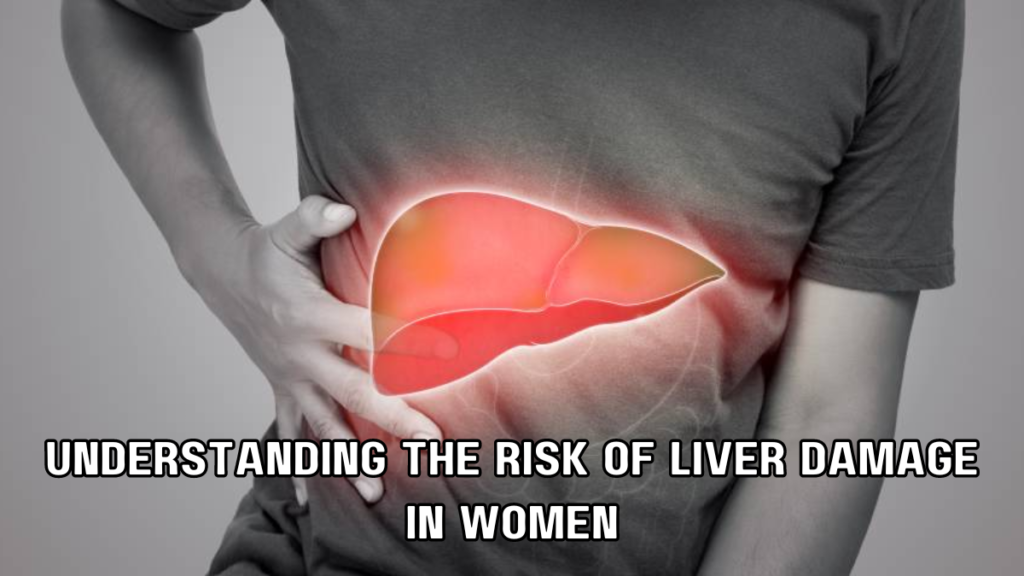Introduction:
Liver health is a critical aspect of overall well-being, yet it is often overlooked until problems arise. While liver disease can affect anyone, research has shown that certain women face a higher risk of liver damage due to a variety of factors. Understanding these risk factors is essential for prevention and early intervention.
The Liver: A Vital Organ
The liver plays a pivotal role in metabolism, detoxification, and the production of essential proteins. It helps process nutrients from food, stores vitamins and minerals, and filters toxins from the blood. Given its numerous functions, maintaining liver health is crucial for overall health.
Higher Risk Groups Among Women:
1. Alcohol Consumption-
While excessive alcohol consumption is a well-known cause of liver damage for both men and women, women are more susceptible to its effects. Studies indicate that women metabolize alcohol differently, leading to higher blood alcohol concentrations and more significant liver damage over time. This increased sensitivity means that even moderate alcohol intake can pose a risk for liver disease in women.
2. Obesity and Metabolic Syndrome-
The prevalence of obesity and metabolic syndrome has been rising globally, with women being significantly affected. Obesity is closely linked to non-alcoholic fatty liver disease (NAFLD), a condition where excess fat accumulates in the liver. NAFLD can progress to more severe liver damage, including non-alcoholic steatohepatitis (NASH), cirrhosis, and liver cancer.
3. Viral Hepatitis-
Chronic infections with hepatitis B and C viruses are leading causes of liver disease worldwide. Women, particularly those of childbearing age, are at risk of transmitting hepatitis B to their offspring during childbirth. Additionally, certain lifestyles and medical conditions can increase the risk of hepatitis C, which often goes undiagnosed until significant liver damage has occurred.
4. Autoimmune Liver Diseases-
Autoimmune liver diseases, such as autoimmune hepatitis, primary biliary cholangitis, and primary sclerosing cholangitis, are more common in women. These conditions occur when the immune system mistakenly attacks liver cells, leading to chronic inflammation and liver damage.
5. Medication and Supplement Use-
Women are more likely to use medications and dietary supplements than men, putting them at risk of drug-induced liver injury (DILI). Certain medications, including over-the-counter pain relievers, antibiotics, and herbal supplements, can cause liver damage, especially when used inappropriately or combined with other hepatotoxic substances.
Symptoms of Liver Damage-
Early signs of liver damage can be subtle, making it essential to recognize potential symptoms:
- Fatigue and Weakness: Chronic tiredness and general weakness.
- Jaundice: Yellowing of the skin and eyes.
- Abdominal Pain and Swelling: Discomfort or swelling in the upper right abdomen.
- Dark Urine and Pale Stool: Changes in urine and stool color.
- Itchy Skin: Persistent itching without an obvious cause.
Prevention and Early Detection-
Preventing liver damage involves adopting a healthy lifestyle and being proactive about medical care:
- Moderate Alcohol Intake: Limit alcohol consumption to reduce liver strain.
- Healthy Diet and Exercise: Maintain a balanced diet and regular physical activity to manage weight and prevent metabolic syndrome.
- Vaccination and Safe Practices: Get vaccinated against hepatitis B and practice safe behaviors to prevent viral infections.
- Regular Health Check-ups: Routine blood tests and liver function tests can detect early signs of liver damage.
- Medication Management: Use medications and supplements responsibly, and consult healthcare providers about potential risks.
Conclusion:
Understanding the factors that contribute to a higher risk of liver damage in women is crucial for prevention and management. By making informed lifestyle choices and seeking regular medical advice, women can protect their liver health and reduce the risk of severe liver disease. Prioritizing liver health is an essential step towards overall well-being and longevity.

